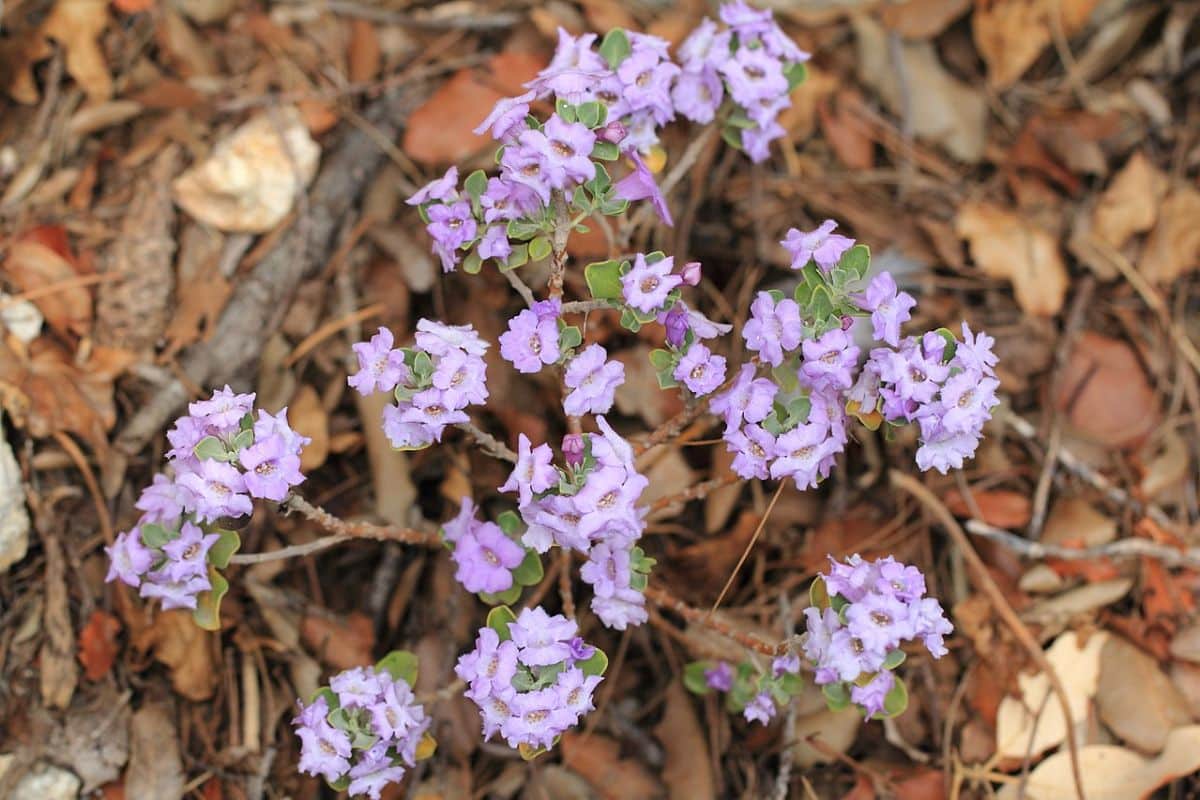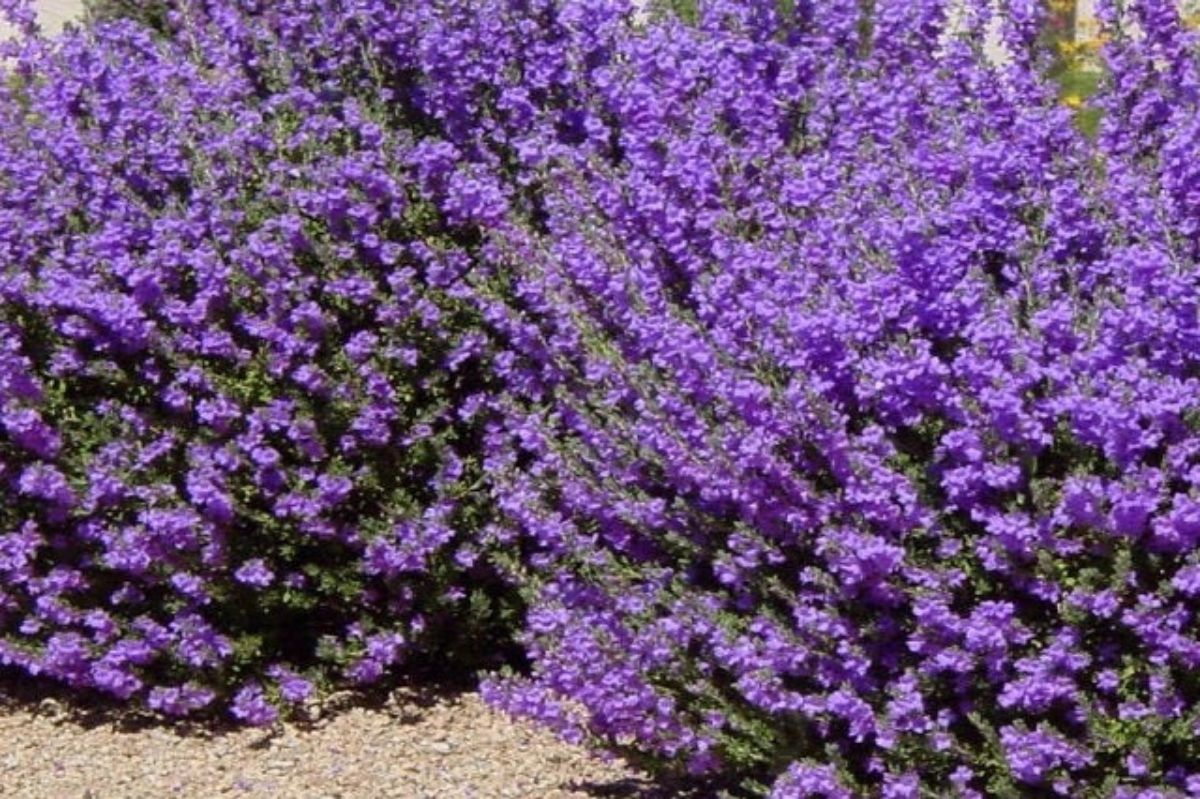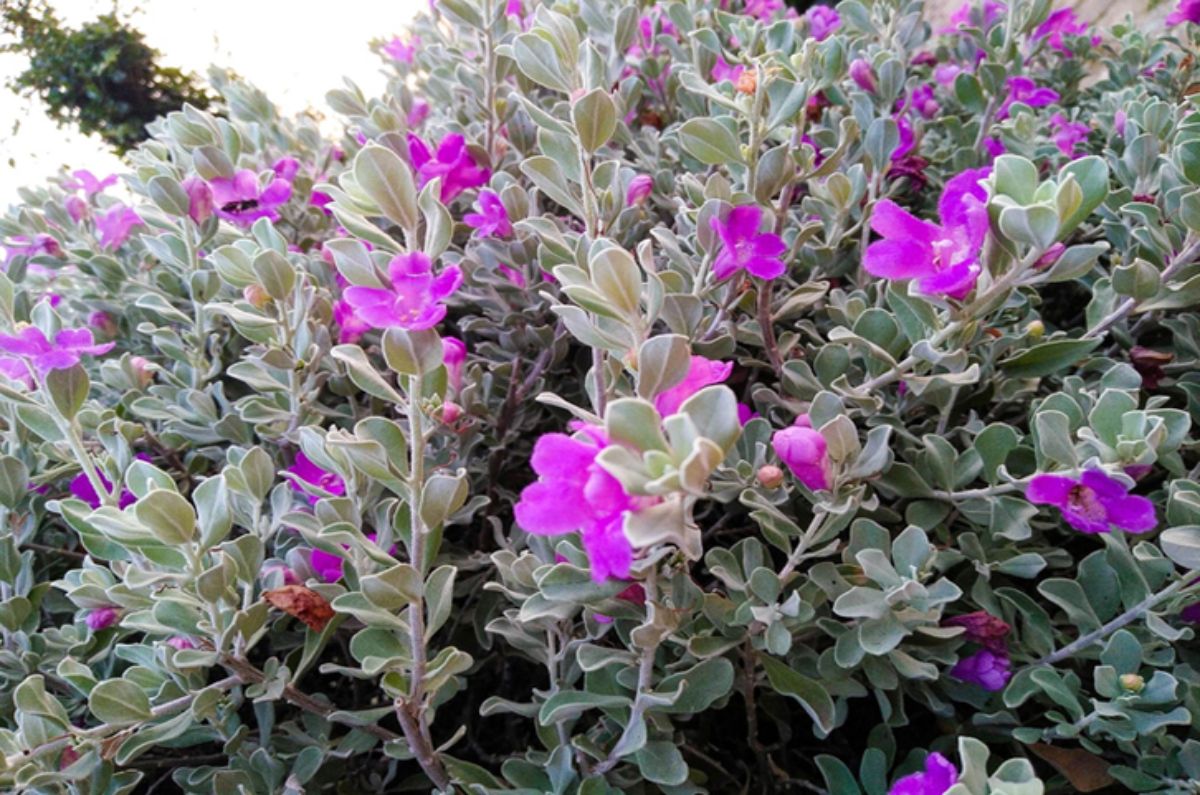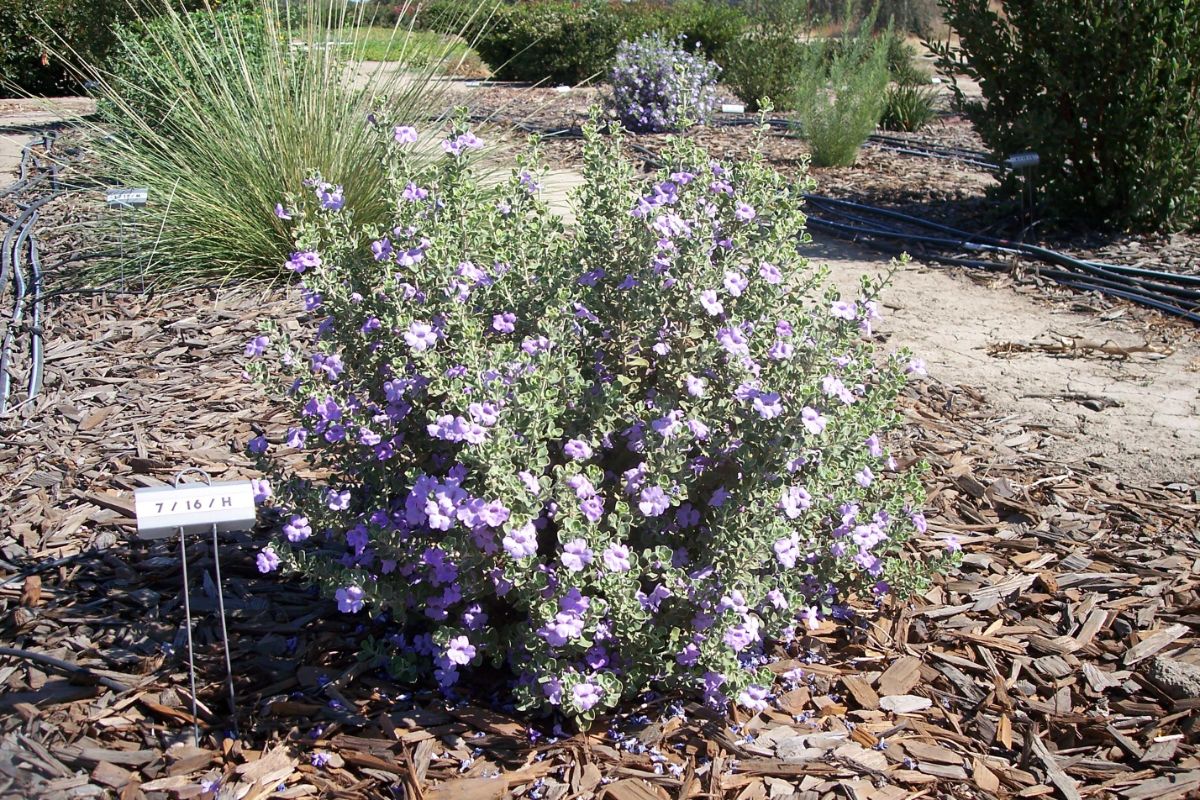
Maybe by the name of Leucophyllum langmaniae You may not recognize it, but if we say ash, Langman's ash, or Río Bravo ashen, it sounds a little more familiar to you. This shrub is one of the most appreciated by the purple color of its flowers.
In fact, visually has a heather-like appearance, but they have nothing to do between species. Next we will talk about everything we have found about the Leucophyllum langmaniae.
Features Leucophyllum langmaniae

Source: The new garden
It is very likely that it is the first time that you hear the scientific name of this shrub. He Leucophyllum langmaniae, or ash, which is the name by which it is more commonly known, is actually an evergreen shrub. He is originally from Mexico, especially from the Chihuahuan Desert and is characterized by having a compact but branched shape, giving it a rounded silhouette that can be one meter both high and wide.
Some identify it as sage, but in reality it has nothing to do with it (although in some countries, instead of recognizing it as sage, they recognize it as sage from Río Bravo.
It is known that the species was discovered relatively recently, in 1985, but beyond that we have not found much information about it. What is known is that this type of shrub attracts hummingbirds a lot (although this will depend on where you put it and if it is common for these types of birds to be found in your country).
How are the leaves Leucophyllum langmaniae
Let's start with the leaves. Of them you should know that the veins are almost invisible and they remain green practically all year round (it is perennial, yes, but if there is a sudden change in temperature or similar it can lose them to sprout when the temperature is warmer). On some occasions, due to the growing season, or when there are changes in temperatures, they can turn a little silver (or blue-green).
All the leaves are spatula shaped while the edges are wavy. In addition, they are fluffy, which gives it a very soft and pleasant texture.
To this you must add that they have a very pleasant leaf smell.
does it bloom?
Yes, you will find that this shrub blooms in the summer and its flowers last until the fall. The usual color of this plant is soft purple. Of course, it must be borne in mind that it only gives one flower for several, not a group of them.
A special characteristic that the flowers of the Leucophyllum langmaniae is that the petals are covered with a fine down. That is what makes it different from another similar ash, Leucophyllum laevigatum. In fact, the flower of both differs in appearance, which allows you to easily distinguish them.
Of course, you must bear in mind that the flowers have no fragrance, so they're just pretty, but they're not going to give off scent.
And does it have fruits?
In this case we must say no, the Leucophyllum langmaniae it has no fruits.
What care does he need? Leucophyllum langmaniae

Source: Pacific Green Landscape
Now that we have better introduced you to this shrub, You should know that it is widely used to cover, or for fences, since it is quite dense and does not let in prying eyes. Perhaps that is why it can attract more attention to have it in your garden. But of course, one of the most important things to take into account is the care of this plant.
Do you want to know what you need to stay healthy and alive all year round?
Lighting design
We start with the location, and therefore the lighting. It is a plant that needs a lot of light, so we do not recommend having it indoors. It is better to place it in the garden since it will be much better that way.
Locate it in an area in full sun. He loves the sun!
Also, you won't have any problems with it because it tolerates strong heat well.
Temperature
Following by the tolerance of the Leucophyllum langmaniae, you should know that it is an SUV. It tolerates both cold and heat. In fact, it can also withstand frosts (if they are very strong, it may lose its leaves (from freezing) but it will soon recover).

Source: UC ANR
Substratum
As for the ideal land you could give this Leucophyllum langmaniaeAlthough it adapts to practically everything, the truth is that if you provide it with a sandy soil it will be more than grateful. Regarding the pH, supports acid, neutral and alkaline, so, as you can see, it won't give you a problem in that sense.
In this case, When planting it in the garden, we would recommend that you mix that soil with some drainage. They really don't tell us anything about the care of the plant, but this way you avoid that, if the plant is small, it has difficulties to get ahead if the soil is too compacted. Once it is an adult nothing will happen, but this way it will surely make it grow faster.
Irrigation
Watering is also not a big problem for this plant. The truth is its need for water is rather low (not to say almost limited). Of course it needs water, but if you live in an area where it usually rains, you shouldn't have to worry about watering it because that's enough for it.
In other areas (where there is a lack of rain) you could water it once a week in summer (and in winter with once a month it could get by). Everything will depend on the weather, location and other aspects that influence irrigation, keep that in mind.
Subscriber
The truth is that, being more of a "wild" plant, does not need a subscriber. It would only have it if instead of being in the garden you had it in a pot since there it is unable to find its nutrients by itself.
Pruning
You shouldn't worry too much about pruning either since, except for maintenance to prevent it from losing the shape you want it to have, you don't have to do much more to the plant.
Plagues and diseases
We have searched regarding this topic but, on this specific plant, we have been unable to find any relationship with pest or disease.
It does not mean that it is immune, but it does mean that it can be quite resistant to these.
Multiplication
Finally we come to the reproduction of the Leucophyllum langmaniae. and in this case could be done by seeds (which is the least used method because it is quite slow), or with cuts (cuttings) of the plant.
The latter is the most common and the one that is done quickly, thus helping it to spread throughout the garden.
But take it easy it is not an invasive plant. The truth is that when it is planted it does not grow so much that it invades the space of other plants, although in this sense you must also leave space between them so that each one can have its "territory".
Has it become clear to you what he is like? Leucophyllum langmaniae?